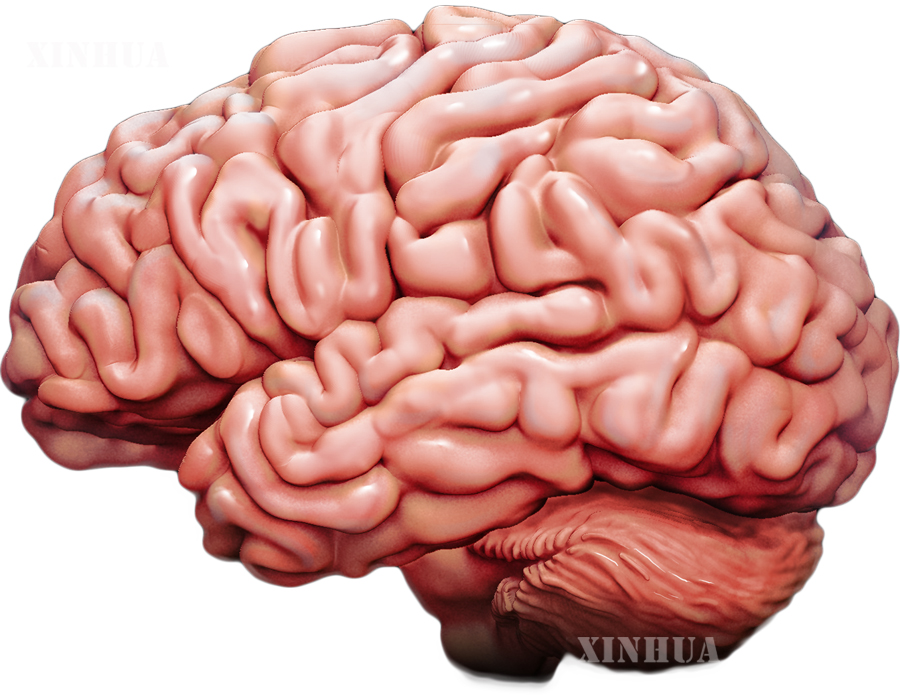Asia
AI နည်းပညာထည့်သွင်းထားသည့် ပုံရိပ်ဖော်ကိရိယာက ကလေးအတက်ရောဂါ၌ ဦးနှောက်ဒဏ်ရာများကို ရှာဖွေတွေ့ရှိကြောင်း လေ့လာမှု ထုတ်ပြန်

မဲလ်ဘုန်း၊ အောက်တိုဘာ ၂ ရက် (ဆင်ဟွာ)
သြစတြေးလျသုတေသီများသည် ကလေးများတွင် ပြင်းထန်သော အတက်ရောဂါ (ဝက်ရူးပြန်ရောဂါ) ကို ဖြစ်စေသည့် သေးငယ်သော ဦးနှောက်ဒဏ်ရာများကို စစ်ဆေးတွေ့ရှိနိုင်သည့် ဉာဏ်ရည်တု (AI) ကိရိယာကို တီထွင်ခဲ့ပြီး ပိုမိုမြန်ဆန်သော ရောဂါရှာဖွေမှု၊ ပိုမိုတိကျသော ကုသမှုနှင့် ကုသပျောက်ကင်းနိုင်ခြေရှိသော အလားအလာတို့ကို ဖော်ထုတ်နိုင်ခဲ့သည်။
ထို “AI အတက်ရောဂါစုံထောက်” သည် ရောဂါဖြစ်ပွားမှုများ၏ ၉၄ ရာခိုင်နှုန်းအထိတွင် ထပ်တလဲလဲပြန်ဖြစ်ပွားသော အတက်ရောဂါကို ဖြစ်ပွားစေသည့် ဘလူးဘယ်ရီသီးတစ်လုံးခန့် အရွယ်အစားရှိသော ဒဏ်ရာများဖြစ်သည့် Focal Cortical Dysplasia (ဦးနှောက်ဆဲလ် မူမမှန်ဖွံ့ဖြိုးမှုဆုံချက်နေရာ) များကို ဆေးဘက်ဆိုင်ရာ ပုံရိပ်ဖော်မှုအကူအညီဖြင့် ရှာဖွေတွေ့ရှိနိုင်သည်ဟု သြစတြေးလျနိုင်ငံ Murdoch ကလေးသုတေသနအဖွဲ့အစည်း (MCRI) က အောက်တိုဘာ ၁ ရက်၌ ထုတ်ပြန်ခဲ့သည်။
အမေရိကန်ဂျာနယ် Epilepsia ၌ ဖော်ပြခဲ့သည့် လေ့လာမှုတစ်ခုတွင် ယင်းစနစ်က MRI နှင့် PET စကင်န်များအသုံးပြု၍ ဦးနှောက်ဒဏ်ရာများ စစ်ဆေးတွေ့ရှိမှုကို လူသားများ၏ MRI စစ်ဆေးမှုရလဒ်များကြောင့် ရောဂါရှာဖွေမှုများ၏ ၈၀ ရာခိုင်နှုန်း လွဲချော်ခဲ့သည့် ပုံမှန်စကင်န်စစ်ဆေးမှုများနှင့် နှိုင်းယှဉ်ဖော်ပြထားသည်။
“ပိုမိုတိကျတဲ့ ပုံရိပ်ဖော်မှုကြောင့် အာရုံကြောခွဲစိတ်ဆရာဝန်တွေအနေနဲ့ စကားပြောဆိုမှု၊ တွေးခေါ်မှု၊ လှုပ်ရှားမှုနဲ့ ကျန်းမာတဲ့ ဦးနှောက်တစ်သျှူးတွေ ဖယ်ရှားမှုတို့ကို ထိန်းချုပ်ပေးတဲ့ အရေးကြီးသွေးကြောတွေနဲ့ ဦးနှောက်နေရာတွေကို ရှောင်ရှားဖို့ရာ ပိုပြီးတော့ ဘေးကင်းတဲ့ ခွဲစိတ်မှုဆိုင်ရာ လမ်းပြမြေပုံကို ဖန်တီးနိုင်ပါတယ်” ဟု MCRI မှ ဦးနှောက်နှင့် အာရုံကြောပါရဂူ Emma Macdonald-Laurs က ပြောကြားခဲ့သည်။
Cortical Dysplasia (ဦးနှောက်ဆဲလ်ဖွံ့ဖြိုးမှု မူမမှန်ခြင်း) ကို ပိုမိုတိကျစွာ ရှာဖွေတွေ့ရှိမှုသည် အတက်ရောဂါခွဲစိတ်မှုအတွက် လွှဲပြောင်းမှုများ ပိုမိုမြန်ဆန်စေပြီး တက်ခြင်းနည်းပါးစေကာ ရေရှည်ဖွံ့ဖြိုးတိုးတက်မှုရလဒ်များကို ပိုမိုကောင်းမွန်စေသည်ဟု အဆိုပါရောဂါရှာဖွေရေး ပုံရိပ်ဖော်ကိရိယာကို ဖန်တီးသည့် အဖွဲ့ကို ဦးဆောင်သူလည်း ဖြစ်သည့် Macdonald-Laurs က ဆိုသည်။
စမ်းသပ်မှုတွင် သြစတြေးလျတော်ဝင်ကလေးဆေးရုံမှ ကလေး ၇၁ ဦး ပါဝင်ခဲ့သည်။ နောက်ဆုံးစမ်းသပ်အဖွဲ့တွင် ကလေး ၁၇ ဦးအနက် ၁၂ ဦးက ခွဲစိတ်ကုသမှု ခံယူခဲ့ပြီး ၁၁ ဦးမှာ ယခုအခါ အတက်ရောဂါမဖြစ်ပွားတော့ကြောင်း အဆိုပါ လေ့လာတွေ့ရှိချက်၌ ဖော်ပြထားသည်။
အတက်ရောဂါသည် သြစတြေးလျကလေးငယ် ၂၀၀ ဦးတွင် တစ်ဦးခန့်ကို သက်ရောက်မှုရှိပြီး ဆေးယဉ်ပါးသော အတက်ရောဂါကို ဖြစ်စေသည့် ယေဘုယျအကြောင်းရင်းတစ်ခုမှာ ကလေးက သားအိမ်အတွင်း၌သာ ရှိစဉ်ကတည်းက ဖြစ်ပွားသည့် Cortical Dysplasia (ဦးနှောက်ဆဲလ်ဖွံ့ဖြိုးမှု မူမမှန်ခြင်း) ကြောင့် ဖြစ်သည်ဟုလည်း ထုတ်ပြန်ချက်၌ ဖော်ပြခဲ့သည်။
ကလေးတွင် ထိန်းချုပ်၍မရသော အချိန်ကြာကြာ တက်ခြင်းများ ဖြစ်ပွားလေလေ ဉာဏ်ရည်မသန်စွမ်းခြင်းအပါအဝင် လေ့လာသင်ယူရန် အခက်အခဲများရှိနိုင်ခြေ ပိုများလေလေ ဖြစ်သည်။ သို့သော်လည်း ပုံမှန်မဟုတ်သော ဦးနှောက်တစ်သျှူးများကို ဖယ်ရှားနိုင်လျှင် Cortical Dysplasia ကြောင့် ဖြစ်ရသည့် အတက်ရောဂါကို ခွဲစိတ်မှုဖြင့် လျော့ပါးသက်သာ သို့မဟုတ် ပျောက်ကင်းစေနိုင်သည်ဟု Macdonald-Laurs က ပြောကြားခဲ့သည်။
ထပ်တိုးရန်ပုံငွေဖြင့် အဆိုပါတီထွင်သူအဖွဲ့သည် သြစတြေးလျနိုင်ငံတစ်ဝန်းရှိ ကလေးအထူးကုဆေးရုံများတွင် အဆိုပါ AI နည်းပညာထည့်သွင်းထားသည့် ပုံရိပ်ဖော်ကိရိယာကို စမ်းသပ်နိုင်ခဲ့သည်ဟုလည်း သုတေသီများက ပြောကြားခဲ့ကြောင်း သိရသည်။ (Xinhua)
……………………..
(English Version)
AI-powered imaging tool detects brain lesions in childhood epilepsy: study
MELBOURNE, Oct. 1 (Xinhua) — Australian researchers have developed an artificial intelligence (AI) tool that detects tiny brain lesions causing severe epilepsy in children, enabling faster diagnosis, more precise treatment, and a potential cure.
The “AI epilepsy detective” can find focal cortical dysplasias, lesions about the size of a blueberry which causes recurring seizures, in up to 94 percent of cases with the support of medical imaging, according to a statement released Wednesday by Australia’s Murdoch Children’s Research Institute (MCRI).
In a study published in the U.S. journal Epilepsia, the system detected lesions using MRI and PET scans, compared with traditional scans where 80 percent of diagnoses were missed by human examination of MRI results.
“With more accurate imaging, neurosurgeons can develop a safer surgical roadmap to avoid important blood vessels and brain regions that control speech, thinking and movement and removing healthy brain tissue,” said study lead author Emma Macdonald-Laurs, a MCRI neurologist.
More accurate diagnosis of cortical dysplasia would lead to faster referrals for epilepsy surgery, fewer seizures and improved long-term developmental outcomes, said Macdonald-Laurs who led the team that created the detector.
The trial involved 71 children at Australia’s Royal Children’s Hospital. Of the 17 children in the final test group, 12 underwent surgery and 11 are now seizure-free, the statement said.
Epilepsy affects roughly one in 200 Australian children, with cortical dysplasias, developing when the baby is still in the womb, a common cause of drug-resistant seizures, it said.
The longer uncontrolled seizures persist in a child, the greater the risk of learning difficulties, including intellectual disability. However, epilepsy caused by cortical dysplasia can be improved or cured by surgery if the abnormal brain tissue can be located and removed, Macdonald-Laurs said.
With additional funding, the team could test the detector in pediatric hospitals across Australia, researchers said. ■
English Caption
The brain, a complex organ that controls all functions of the body, is made up of billions of cells called neurons. (Xinhua)
